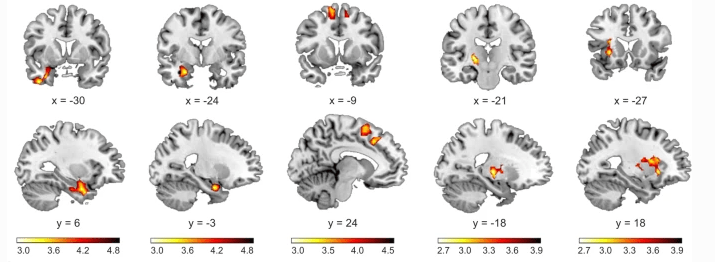Researchers in Germany have been investigating the potential of using transcutaneous auricular Vagus Nerve Stimulation (taVNS) to help regulate our eating habits. In a study published in the Brain Imagine and Behaviour journal, scientists administered an hour of tVNS stimulation to a cohort of healthy participants and put them in an fMRI scanner to see how the stimulation influenced the appetite regulation centres of the brain. While not conclusive, the research showed some promising results.
That stimulation of the vagus nerve could influence appetite makes a lot of sense considering that the vagus nerve is the primary channel of communication between our brains and guts; and also carries taste information back to the brain; and is highly involved in food metabolism.
Moreover, patients who receive invasive forms of vagus nerve stimulation for the treatment of epilepsy or depression often experience appetite reduction and weight loss as a side effect.
Motivated by such considerations, a team of researchers in two German Universities asked whether a form of non-invasive vagus nerve stimulation could be used directly as a means of controlling appetite.
The researchers reported that the results of the study were promising, but mixed. Participants who received stimulation, as opposed to sham, found food less appealing after stimulation, but this did not translate into longer term changes in eating behaviour.
Participants were tested with a combination of questionnaires and fMRI imaging. The researchers reported that the fMRI scans provided “clear evidence for specific modulatory effect of tVNS” on how appealing the participants found food and this neurological effect persisted beyond the stimulation session. But when eventually offered a meal, following a period of fasting, participants who received the stimulation ate approximately as much as those who received sham stimulation.
The brain imaging showed very similar effects between invasive vagus nerve stimulation (VNS) and non-invasive stimulation (tVNS), as would be expected. And this was correlated in this study with self-reported appetite from the participants.
The researcher suggested that with better stimulation parameters selection, the approach could be tuned to be more effective in the longer term and offer non-invasive treatment options for obese patients.
References
Alicart, H., Heldmann, M., Göttlich, M. et al. Modulation of visual processing of food by transcutaneous vagus nerve stimulation (tVNS). Brain Imaging and Behavior (2020). https://link.springer.com/article/10.1007/s11682-020-00382-8
Pardo, J. V., Sheikh, S. A., Kuskowski, M. A., Surerus-Johnson, C., Hagen, M. C., Lee, J. T., Rittberg, B. R., & Adson, D. E. (2007). Weight loss during chronic, cervical vagus nerve stimulation in depressed patients with obesity: An observation. International Journal of Obesity, 31(11), 1756–1759. https://doi.org/10.1038/sj.ijo.0803666.
Burneo, J. G., Faught, E., Knowlton, R., Morawetz, R., & Kuzniecky, R. (2002). Weight loss associated with vagus nerve stimulation. Neurology, 59(3), 463–464. https://doi.org/10.1212/WNL.59.3.463.



